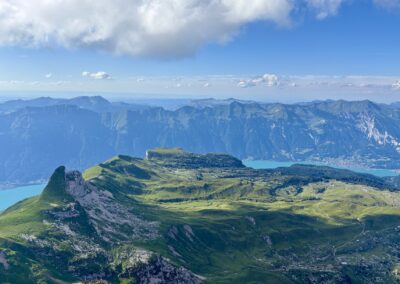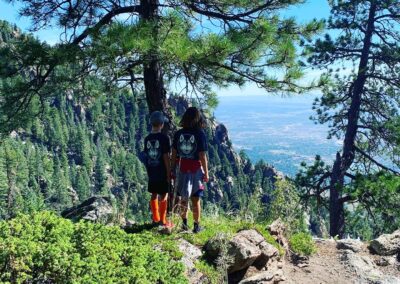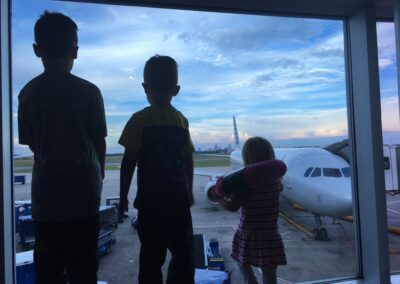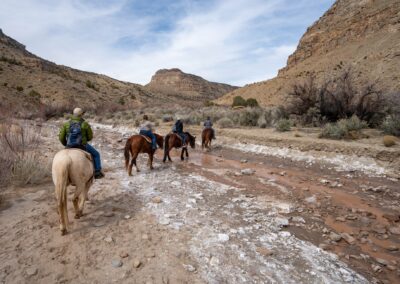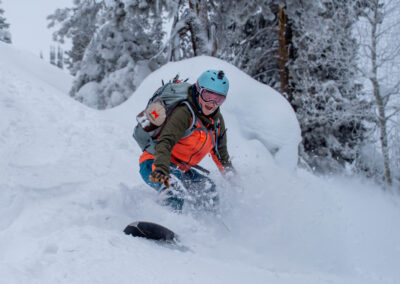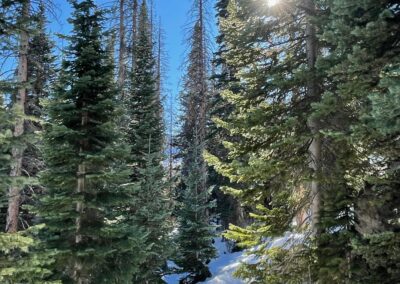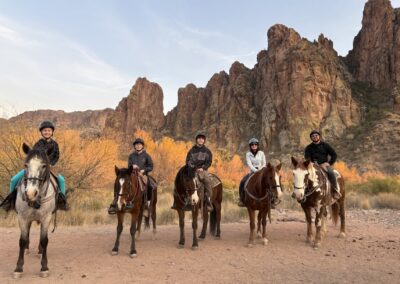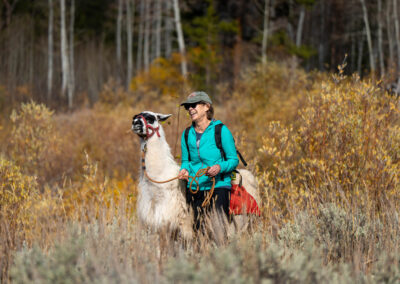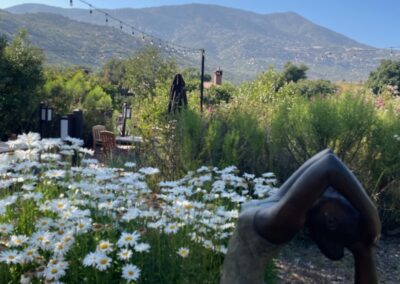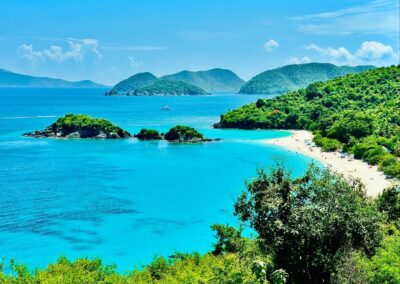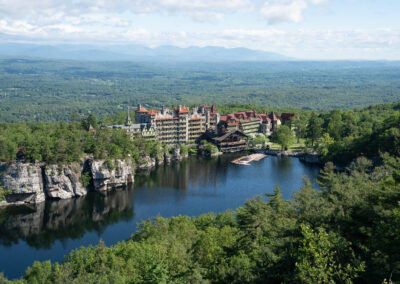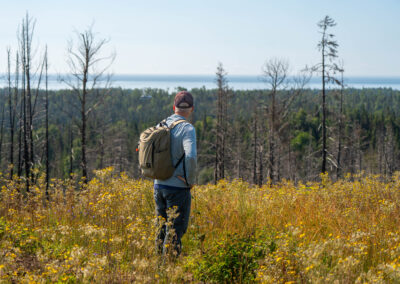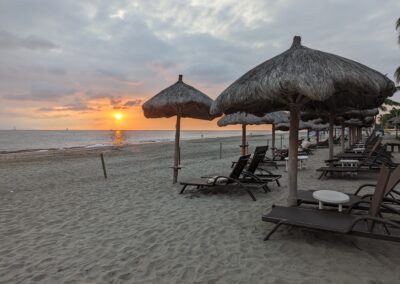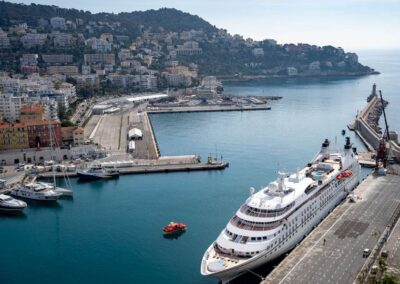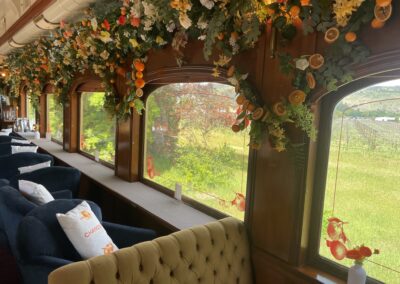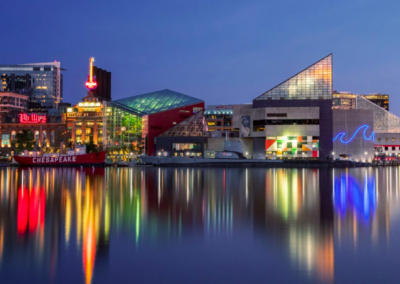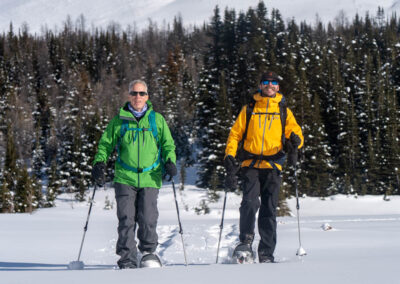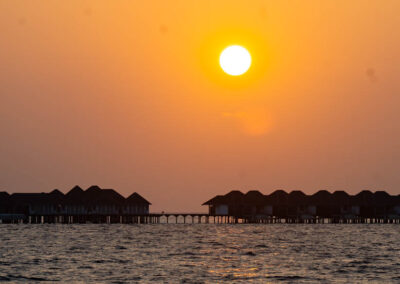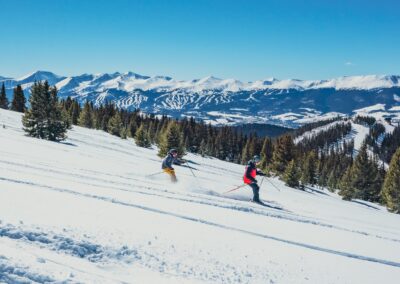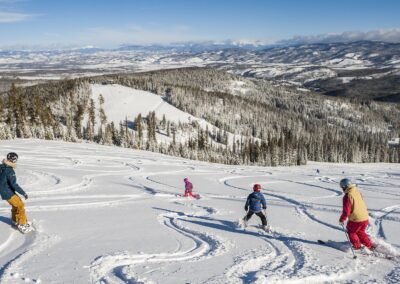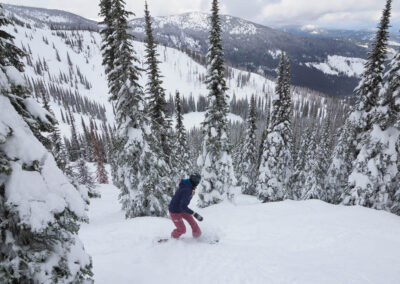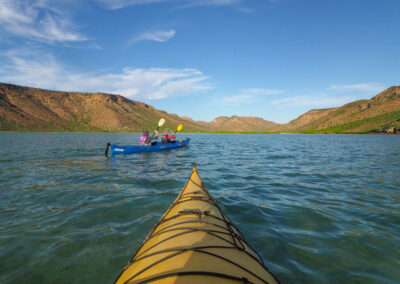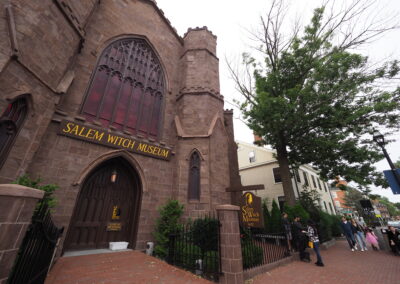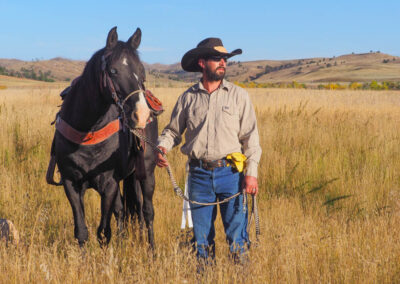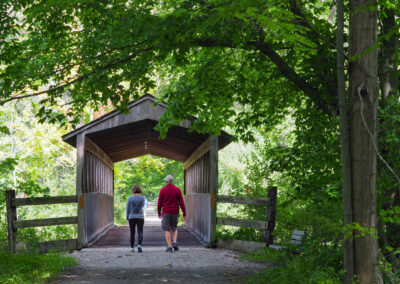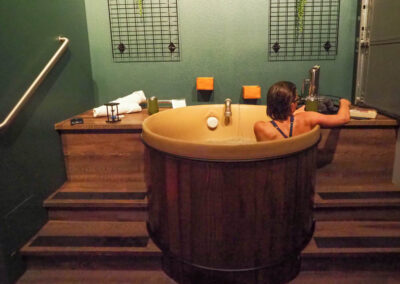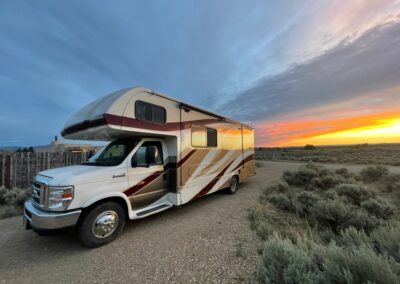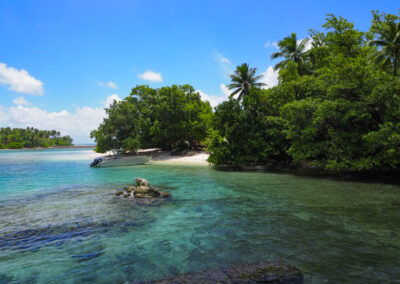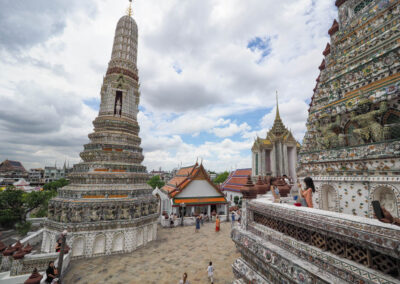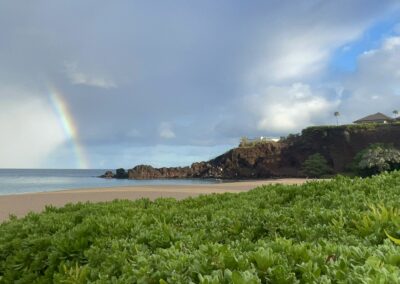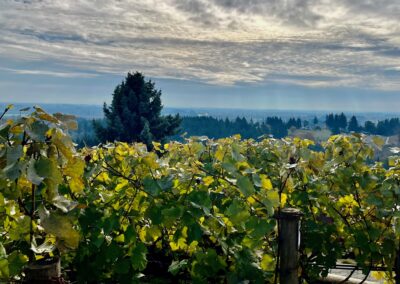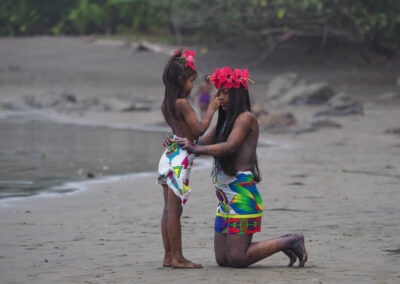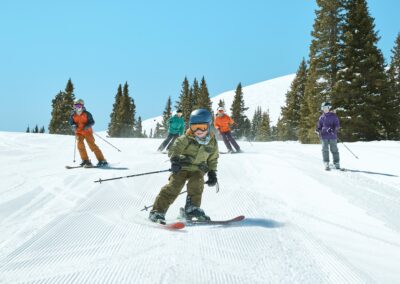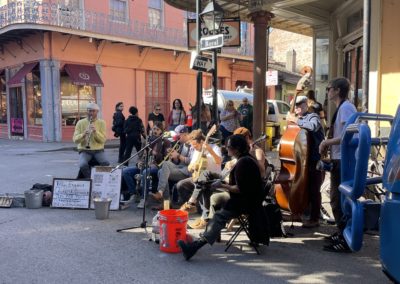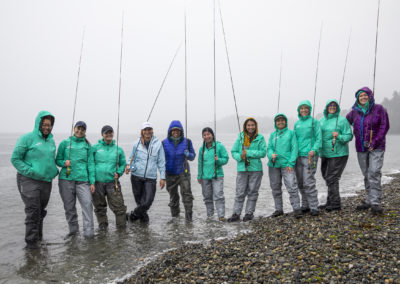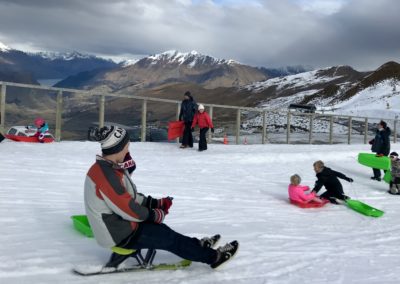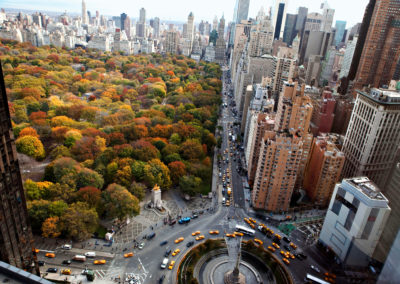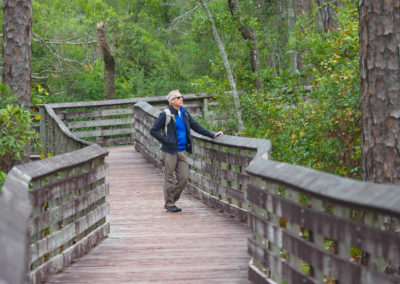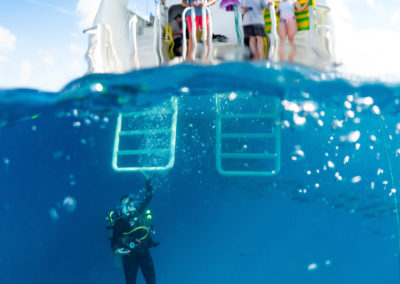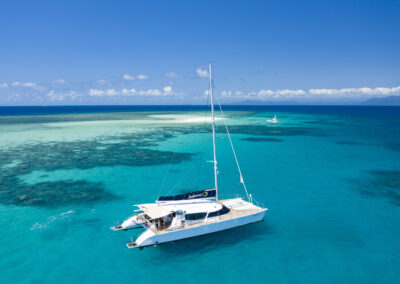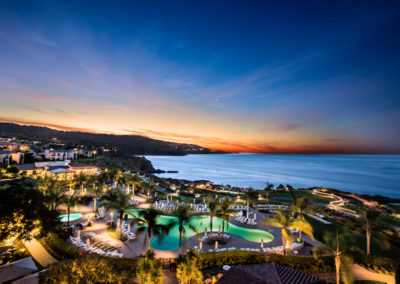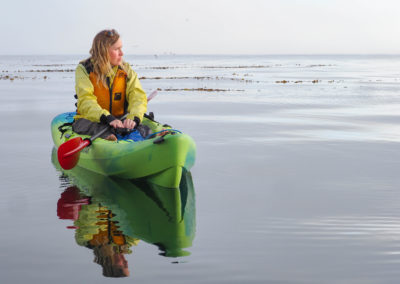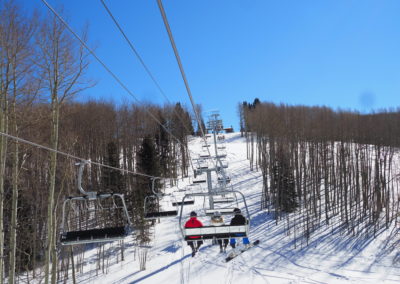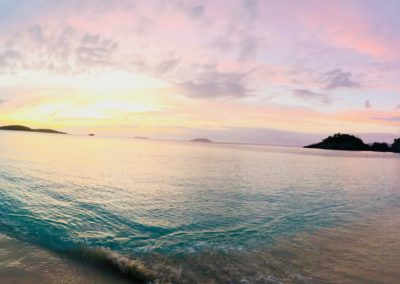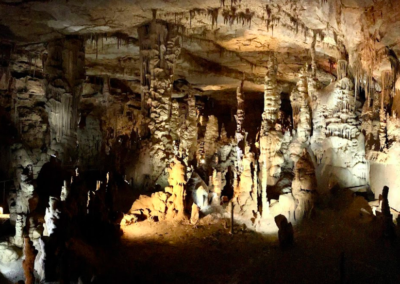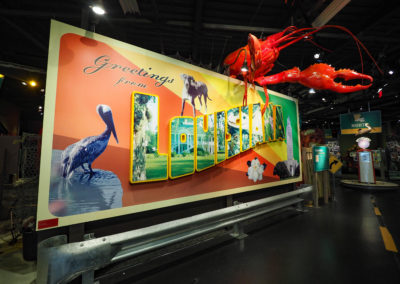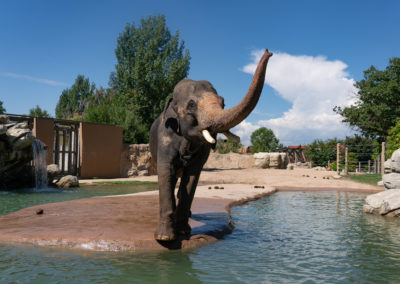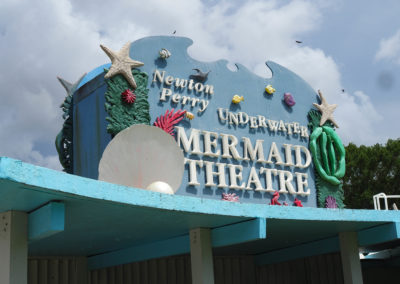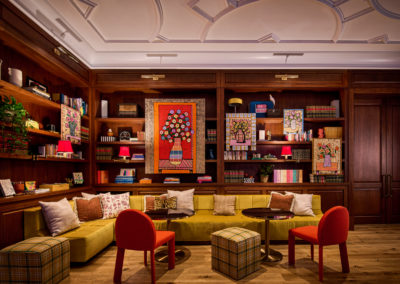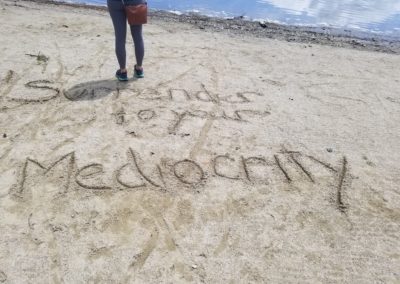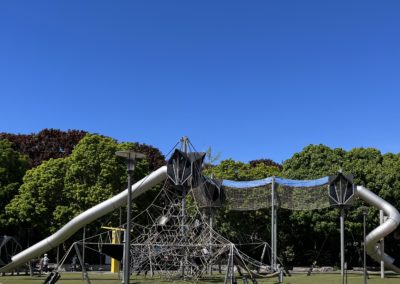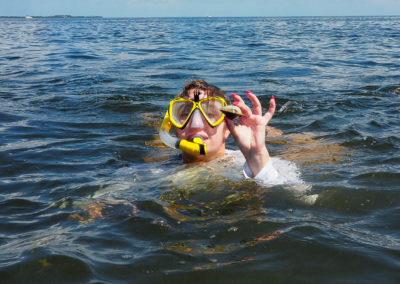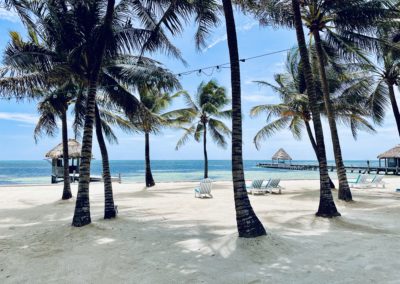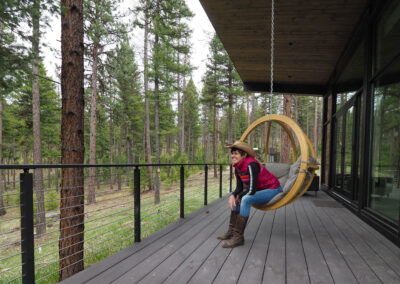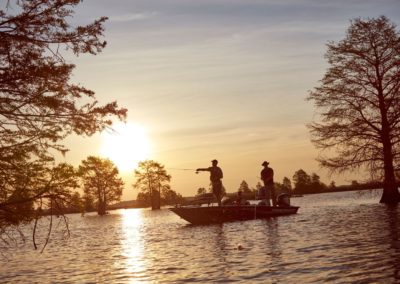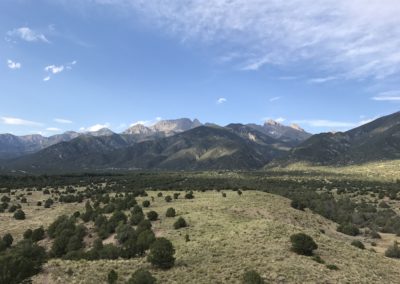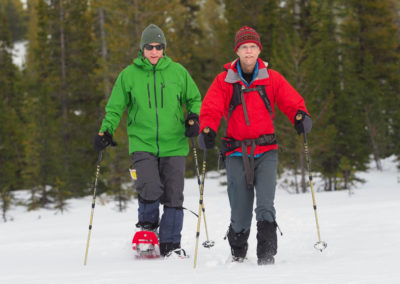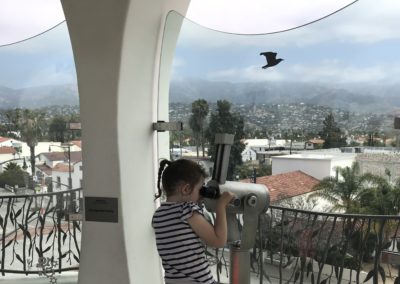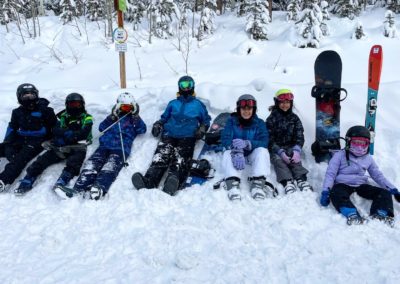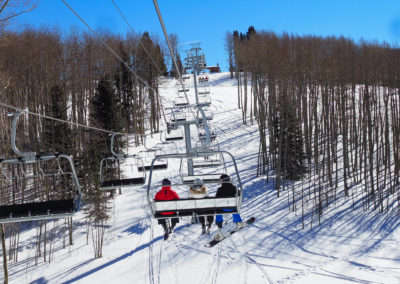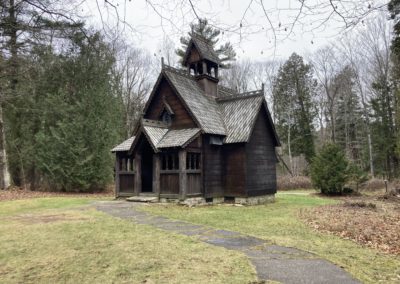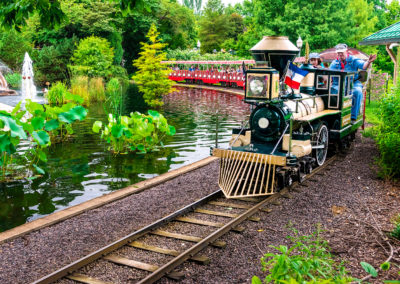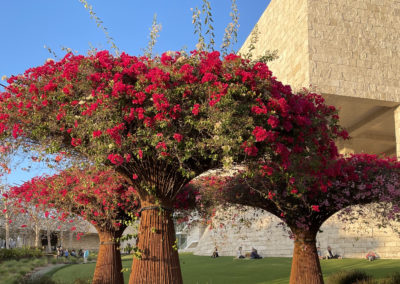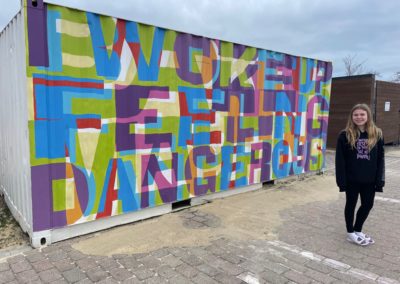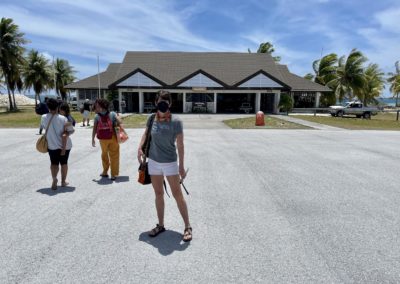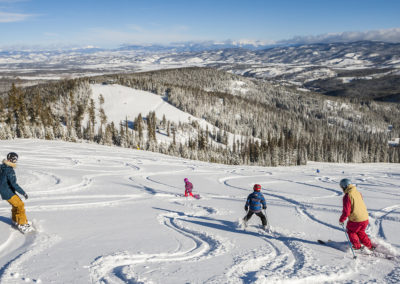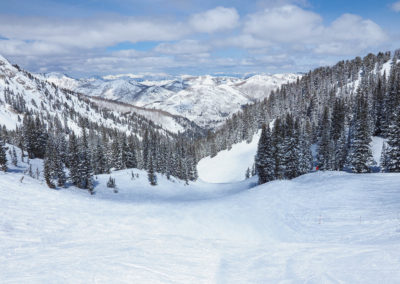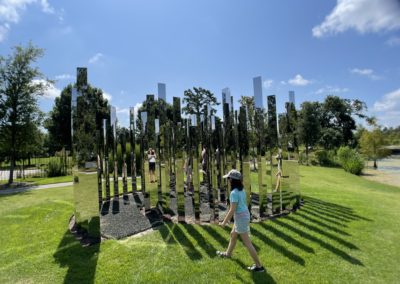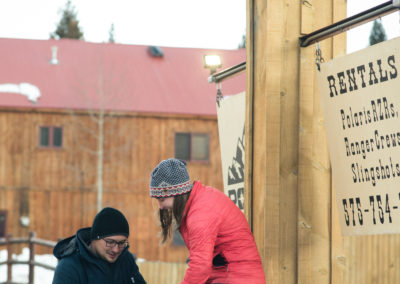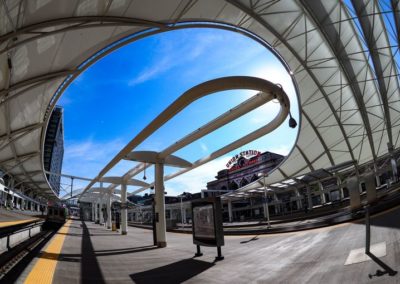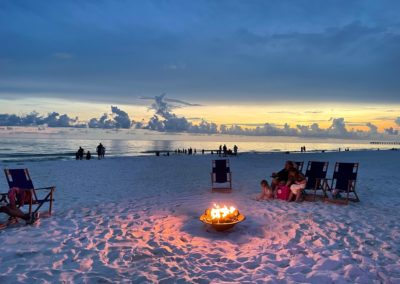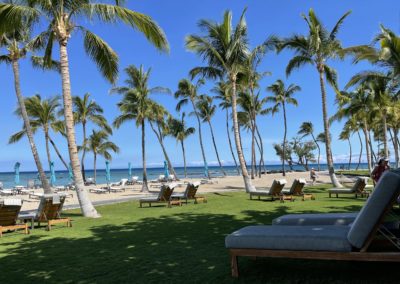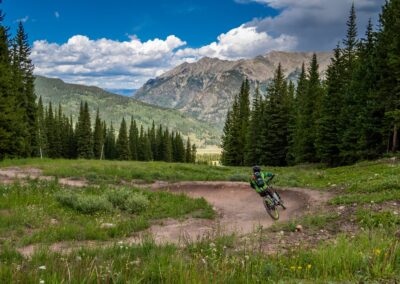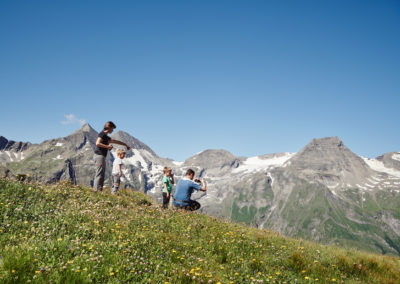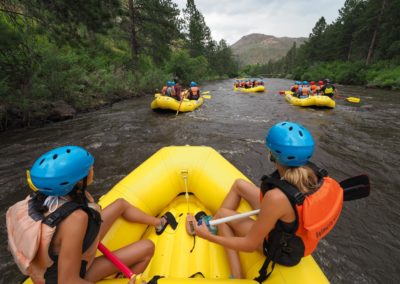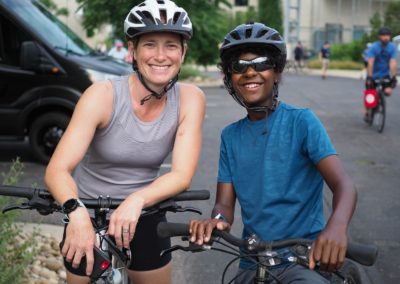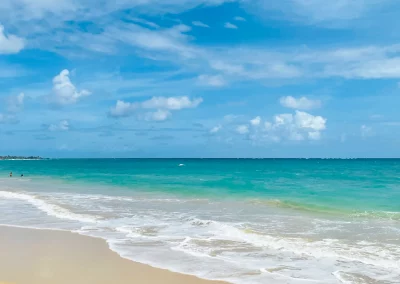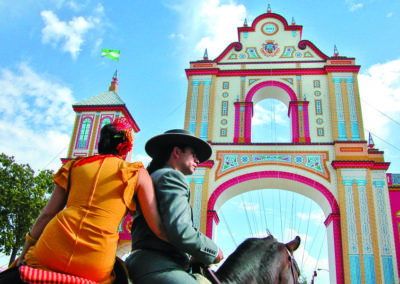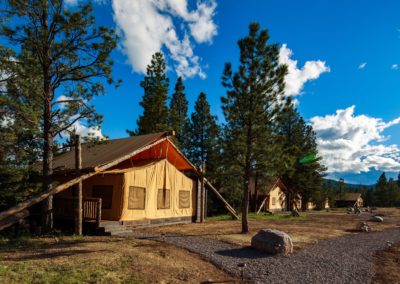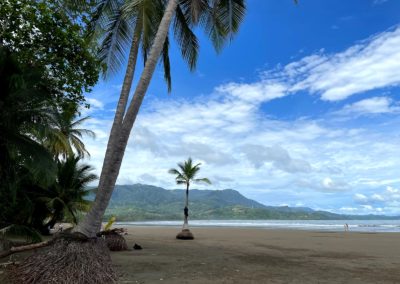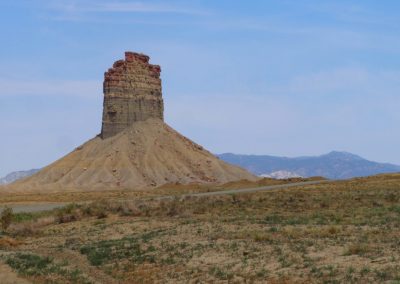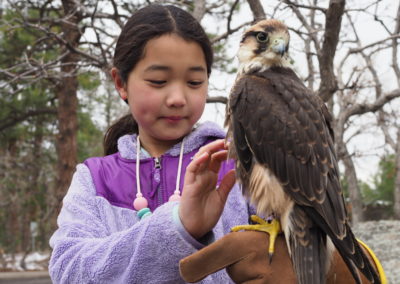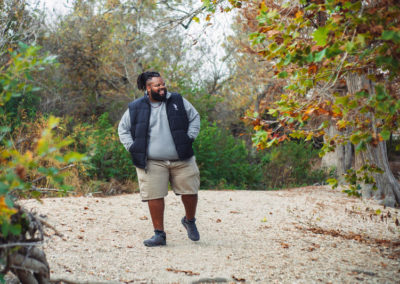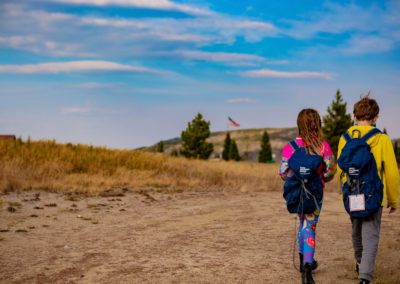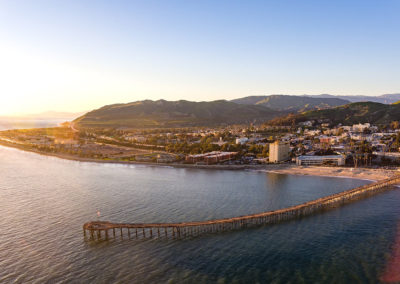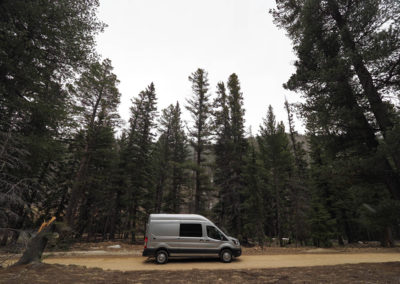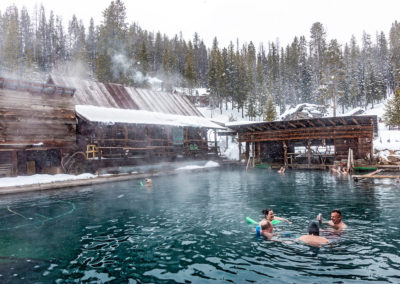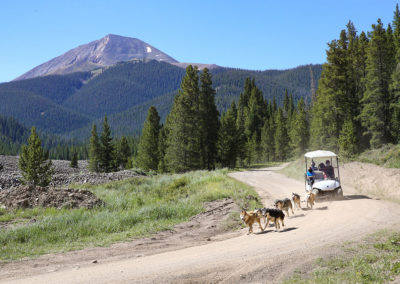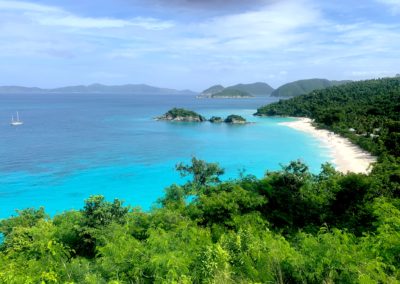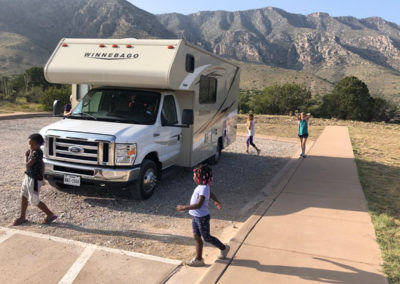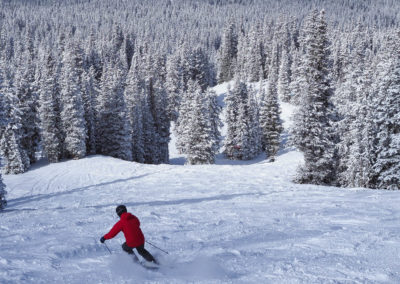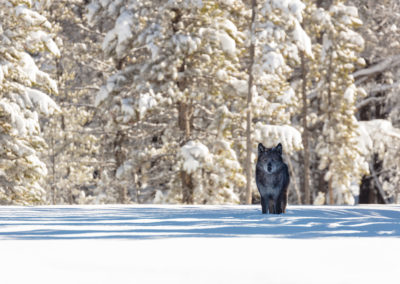Costa Rica welcomed us warmly, and although we tried to leave no trace, is that really possible?
My boyfriend Frank and I took our first post-vaccine vacation to explore the jungle, relax on the beach and spend time with his sister and her husband, New Braunfels residents who have been building a house down there for the past 5 years.

Hiking to Nauyaca Waterfalls, one highlight of a recent trip to Costa Rica. Addie Broyles photo
Part-time ex-pats Cary and Jim couldn’t have been nicer hosts, and without their invitation, I don’t know if we would have ever found ourselves on the Southern Pacific Coast of a country that neither of us knew very much about before we booked the trip.
But I’m so glad we went.
I came back with a new appreciation for Costa Ricans and Costa Rican culture and a renewed desire to be a thoughtful traveler. More on conscious travel in a minute, but first, a little about post-COVID travel logistics.

Calle 33 is considered San Jose’s restaurant row. We visited in mid-June, which is the rainy season. Addie Broyles photo
It’s not post-COVID in Costa Rica yet. Many people are getting vaccines, but many aren’t yet eligible. As of the end of June, visitors must buy travel insurance before they arrive and take a COVID-19 test before they leave, even if you already have been vaccinated. (Go to https://salud.go.cr/ to get a health pass once you get the insurance. You can take the COVID-19 test anywhere in the country up to three days before you leave, and they do have one-hour testing at the airport.)
You’ll be asked to wash your hands and wear a mask everywhere. Everyone does it, and you won’t get a seat at a restaurant until you comply.
Second, pack your water shoes, your patience and your fish oil tablets.
Our first day in Costa Rica was in San Jose, the capital.

The view from Addie’s AirBnB in San Jose. Addie Broyles photo
You won’t hear me say San Jose isn’t a city worth visiting, which is what I’ve read in some travel books. I will say that the city is a fair distance from the airport where you’ll be arriving and the destinations you likely have planned. It’s a city set in a remarkable locale with a handful of museums and sights to see.
We didn’t spend a ton of time in San Jose, but we loved the foodie destinations along Calle 33 in Barrio Escalante and our night on the 23rd floor of URBN Escalante, an AirBnB/condo high-rise in a trendy part of the city.
We rented a car (and drove through San Jose in the rain during afternoon traffic!), but you can also catch buses and shuttles to whichever region of the country you’d like to visit and then rent a car when you get there.
Many folks head to Tamarindo in the Northwest or Puerto Limon, Tortuguero or Puerto Viejo on the Caribbean coast. Arenal, the majestic volcano, in the North is another popular destination.
No matter where you go, prepare your mind for a biological clock shift. Because the country is located so close to the equator, the sunrise and sunset are almost exactly 12 hours apart, all year round, usually from around 5 to 5. We were fed and ready for the day by 7 a.m. and ready for bed by 7 p.m. every night we were there.
Costa Rican roads have improved greatly over the past 10 years, with many once-dirt highways now paved, but you’ll still want a 4×4, especially during the rainy season. Even with the improved road conditions, though, it takes much longer than you imagine to get around the country. Our longest delays led to some of the only difficult moments during the trip. (We spent two hours in the customs line when we arrived, and it took four hours to drive 140 miles on the way to the airport on our final day.)
RELATED: 7 magical things to do in Big Bend
After hitting up a fruit farm and taking a chocolate tour in San Jose, our next goal was Manuel Antonio National Park in Quepos. This is one of the busiest parks in the country, and it feels like it. Keep your expectations at bay, so you’ll be surprised if you see some unusual fauna or a stunning beach that isn’t too crowded.
Our favorite national park experience was Parque Marino Ballena, which is south of Quepos in the town of Uvita. This popular surf town hosts a music-arts festival called Envision in February that some people compare to Burning Man, but you can find the hippie vibe there all year. (Same with Dominical, which is slightly smaller but no less “surf dude.”)
At Marino Ballena, plan your visit during low tide and you can walk out to a stretch of rocks that, from above, looks exactly like a whale’s tail. It’s a natural formation that’s fitting for the annual visit of whales that starts each July. (For what it’s worth, I would time a future trip to this region specifically to see the whales. It was truly a stunning park with coconut trees lining the uncrowded beach.)
The beach here is more protected than at many others in the area, so it’s better for swimming and for kids. We weren’t chasing the big breaks found at many other beaches along the coast, so we absolutely loved this beach.
I was one of those visitors who planned to spend a lot of time at the beach, but I should have taken the waterfalls more seriously. Our hosts took us to Nauyaca Waterfalls, some of the biggest and most stunning cataratas in this part of the country. A Tico family has owned the property for many years, and you can rent horses from them or do the hike by yourself. We walked the hike on foot, and I’m glad we all wore good water shoes. It’s almost 2 miles each way, but the hike — and the waterfalls at the end — were absolutely beautiful.
We brought lunch and sat in amazement at the flow of water coming off the falls. Mid-June is the rainy season, so the daily afternoon downpours meant the waterfalls were flowing at twice the rate as in the dry season, which is December to March.

Hotel Cristal Ballena in Ojochal offered a beautiful view of the sunset after the rain. Addie Broyles photo
After a few days of afternoon rain, we didn’t mind the gray skies that gathered each afternoon. By that point in the day, we’d often spent all of our energy out in the wilderness somewhere, so we would find a cozy spot to enjoy a cocktail or an Imperial and watch the sunset. (La Cusinga and Hotel Cristal Ballena are my top picks for a drink with a view in Ojochol, and don’t miss Ronny’s Place in Quepos.)
Our last adventure of the trip took us (almost) to the Osa Peninsula, which is home to Costa Rica’s largest and most ecologically diverse park: Parque Corcovado.
We didn’t go into Corcovado on this trip — the park is really only accessible by boat and you have to hire a guide to hike on many of the trails — but we did experience our first zipline at Osa Canopy Tours, which took us up to the top of a mountain that overlooked the peninsula.
Just when I thought I’d had enough Zooming this year, I found myself zipping through the canopy, high above this little corner of paradise. I could see the wide mouth of a river emptying into the ocean and the famed Isla del Caño visible in the distance.
One of the ziplines was longer than a kilometer, a unit of measure I was now familiar with (again) after a week in this tourist-friendly vacation destination.
I knew how long the zipline was because of our guide, Emmanuel, who grew up on the mountain we were traipsing around. As a kid, he saw the zipline truck driving tourists up the steep roads each day. When he was a young teen, he asked his dad if he could try to get a job with the tour company.
“My dad gave me a good recommendation,” he told me in Spanish while we were driving up the hill ourselves.
I try to visit a Spanish-speaking country at least once a year, ostensibly so I can keep up my second language, but it’s more than that, obviously. I want to put myself in situations like this one, where I’m standing on a platform in a tree with a guide who has told me about how his love of making things with tools led him to want to work for a zipline company, where he’s always building and fixing the course and taking travelers like me on once-in-a-lifetime adventures.
Emmanuel is, in many ways, living his own dream.
He learned English by working these zipline tours and is a provider for his family. He works close to home doing something out of the ordinary for many Ticos. He’s good with people, knowing exactly how to calm a new zipliner’s nerves when they are facing their fear of height or speed.
He welcomes visitors from all over the world who bring their money, their masks and their culturally influenced mindsets about what constitutes “fun,” “hard” and “vacation.”
Costa Rica is not a hard country to visit, but it can bring up hard questions.
Why is so little known about pre-colonization cultures in Costa Rica? Why is Costa Rica a haven for Nicaraguans and El Salvadorans? Why haven’t they received more vaccines? Does the tourism and expat industry do more harm than good?
Like so many countries in Central American, colonization shaped and continues to shape Tican life, even those who benefit from the industry. More than two million people visit Costa Rica each year, and tourism contributes 8 percent to the country’s economy.
I didn’t hear or see any evidence of tension between locals and tourists, but when Emmanuel told me he hadn’t visited the Caribbean Coast of his own country nor the national park at the bottom of the mountain, I started to wonder who all this tourism was for.
We’d like to think that tourism is designed to serve all travelers, including nationals exploring their own country, but this isn’t always the case.
Many parts of the travel industry today, including resorts, chain hotels and even AirBnB, are designed to keep travelers in a bubble where they feel like they are interacting with locals and getting an “authentic” experience at all times. I found a new Instagram account called @decolonizingtravel, which brings up some important questions about how people with power and privilege contribute to the exploitation of people, culture and environmental resources for travel purposes.
How can we travel with ultimate respect for the people who call these places home? How can we have respect for the environment and culture when we go into spaces that are not ours? What travel practices have upheld institutional power structures that hurt low economic workers? What ways has/hasn’t travel evolved to more equitably distribute money and power among historically marginalized groups?
I don’t have many answers, but as we confront these issues of injustice at home, it’s important to think about them as we decide how (and if and where) to take ourselves on the road.
Follow local regulations and practices. Listen to what folks are saying when they tell you about their lives. Tip generously. Treat people with utmost respect, especially if they are drawing a boundary that you don’t like. Keep your ego in check. Allow yourself to be humbled. Take that humility with you when you go back home.
And wear a mask and wash your hands.
I don’t know if it’s possible to truly leave no trace anywhere we go, but we can try.
Read more of Addie Broyles’ work at https://thefeministkitchen.substack.com.








